ASUS Zenbook Prime (UX21A) Review: The First of the 2nd Gen Ultrabooks
by Anand Lal Shimpi on May 22, 2012 2:46 PM EST- Posted in
- Laptops
- CPUs
- Asus
- Ivy Bridge
- Zenbook
- Zenbook Prime
- Ultrabook
- Notebooks
The Zenbook Prime Exterior
The all-aluminum Zenbook chassis makes another appearance with the Zenbook Prime. It's the same thickness and weight as its predecessor. The Prime also features the same port configuration. On the 11-inch model you get two USB 3.0 ports (one on each side), a mini VGA out (with bundled dongle), micro HDMI out and shared audio/mic jack. The 13-inch model adds an SD card reader, while the thicker UX32 adds full sized HDMI and a third USB 3.0 port on top of that.
While the outside of the Zenbook hasn't changed at all, it's what's inside that's completely different. Both the UX21 and UX31 now feature 1920 x 1080 IPS panels. I'll get into the debate over the usability of such a high res on such an 11.6 inch display shortly, but at a high level this is just awesome. ASUS is finally putting the type of attention we've been asking for on display technology. The 1080p panel on the UX21 looks amazing and performs extremely well as you'll soon see. I can only assume the UX31's panel is similarly impressive.
What else got updates? The camera (now 720p), keyboard, trackpad, WiFi, USB 3.0 and power adapter, to name a few.
The New Keyboard
The keyboard is all-new on the Zenbook Prime. Although it doesn't look as stylish as what ASUS introduced in the original, the new keyboard is worlds better to type on. It feels almost identical (but not completely) to the MacBook Air keyboard, which in my opinion is a good thing. Finger fatigue is significantly reduced compared to the original Zenbook. ASUS claims 12% increased key travel compared to the predecessor which definitely contributes to a better typing feel.
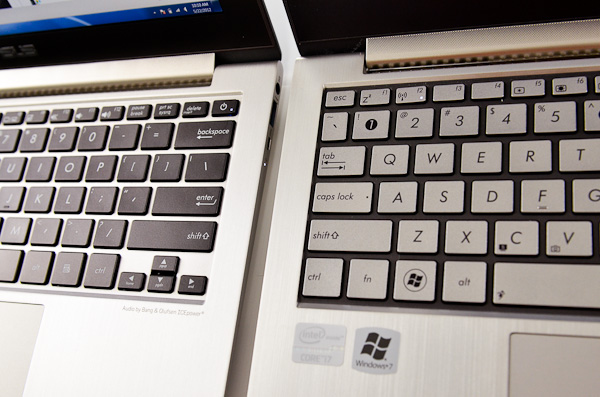
The new keyboard (left) vs. the old keyboard (right)
The keyboard obviously looks very similar to Apple's chiclet as well and now features a LED backlight. There are three selectable brightness settings for the keyboard backlight (four if you count off), which you control via a keyboard shortcut (fn F3/F4).
A Much Improved Trackpad
The problematic trackpad from the original Zenbook was actually addressed mid-cycle last generation. ASUS switched to an ELAN trackpad that did away with most of the issues I encountered. Users who wanted the new trackpad could call, complain and should've been able to get their unit swapped out although there was never a formal replacement program. The Zenbook Prime uses the same trackpad, although this is my first personal experience with it in a Zenbook.
In short, it's much better than what I originally reviewed. Keeping one finger on the trackpad's left click area while you move the pointer is no longer an issue. The pointer will occasionally refuse to move but it's very rare and ASUS even ships software that lets you tweak the trackpad's sensor to better match how you use it:
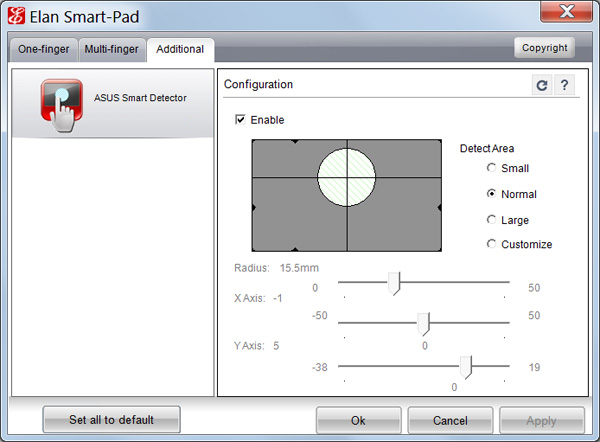
Tap to click and actually clicking the trackpad are both non-issues again. Two finger scrolling as well as three finger forward/back gestures all work very well. Overall the experience is pretty good, albeit not quite perfect. It's likely the best ASUS can do without writing its own trackpad driver. At some point it may just come to that however.
An Updated Power Adapter
The 45W power adapter from the Zenbook gets a slight update as well. Remember the charge indicator that never turned off? Fixed. Also the somewhat worrisome power connector has been beefed up, it's a bit thicker and I'm less worried about it snapping off.
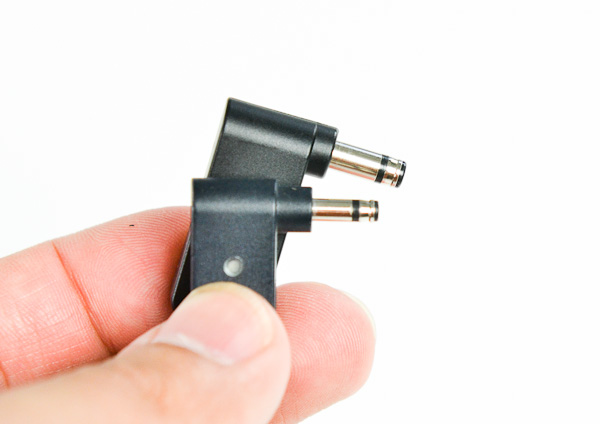
The old Zenbook power connector (bottom) vs. the new Zenbook Prime connector (top)
I shouldn't be surprised that ASUS fixed these things but it's just so rare that a company listens to feedback and acts appropriately in such a short period of time. I would still like to see a MagSafe clone and better cable management than a bit of velcro, although navigating around any associated patents there should be fun for ASUS' lawyers.
Vastly Improved WiFi
The original Zenbook featured a 2.4GHz Qualcomm Atheros AR9485 802.11b/g/n WiFi solution. Only supporting a single spatial stream the best sustained speeds I saw were around 5MB/s using 20MHz channels at 2.4GHz. The Zenbook Prime offers a considerable upgrade.

Now inside the machine is Intel's Centrino Advanced-N 6205 controller. The 802.11a/g/n controller adds 5GHz support and link speeds of up to 300Mbps. In practice I saw a doubling of performance under the same conditions as the original Zenbook (80Mbps vs. ~40Mbps).
As a side benefit, since ASUS is using Intel's Centrino WiFi on an Intel platform it also by default supports Intel's Wireless Display (WiDi) technology.
Just like last time, the UX21A comes with a sleeve case, VGA dongle and USB to 10/100 Ethernet adapter.
USB 3.0 on Both Ports
Courtesy of Intel's HM76 chipset found on the Zenbook Prime's motherboard are the notebook's two USB 3.0 ports. The original Zenbook had a single USB 3.0 port and one USB 2.0 port by comparison. USB 3.0 performance is a bit higher than what I measured with the original Zenbook. I had no problems sustaining transfers at above 170MB/s.
VGA and HDMI out are also supported. There's no Thunderbolt or DisplayPort on the Zenbook Prime unfortunately.
Simplified SSDs
The original Zenbook offered one of two SSDs depending on the model you picked up: Sandisk's U100 or ADATA's SandForce SF-2281 based XM11. If you'll remember back to my review of the original Zenbook I expressed concern that ASUS was shipping a known buggy firmware with the ADATA drive, although admittedly I didn't run into any of the SandForce BSOD issues during my review of the system. It looks like those concerns can be put to rest as ASUS has dropped SandForce from the Zenbook Prime. Sandisk's U100 is all that's available now.
As we've alluded to in the past, the U100 isn't the fastest SSD on the block but it should be very well priced for ASUS and obviously faster than a mechanical drive. Read speeds are quite good, but write performance is where the U100 falls short. Do a lot of IO (e.g. install a game or just write sequentially to the drive) and you'll notice IO latencies increase. It's the same issue we ran into early on in the MLC client SSD space, but no where near as bad. The good news is there's no stuttering or other similarly undesirable behavior. The system still functions like it has an SSD, it's just that it could be a lot faster under load. I'm saving a full investigation into U100 performance for final Zenbook Prime hardware.
My hope is that we'll see vendors offer drop in replacements for the drive similar to what we saw OWC do for the MacBook Air. I still haven't gotten a straight answer as to whether or not the ASUS drive is electrically compatible with the MacBook Air SSD, nor have I been brave enough to risk nuking a drive to find out. Update: the two SSDs are physically similar, but not physically compatible. Here's a challenge to all SSD makers out there: build an upgrade kit for the Zenbook.


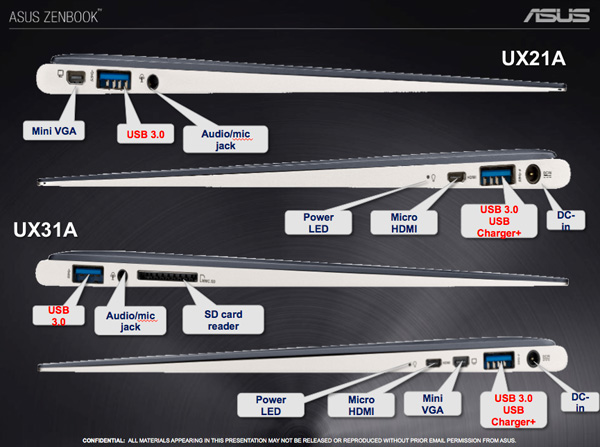
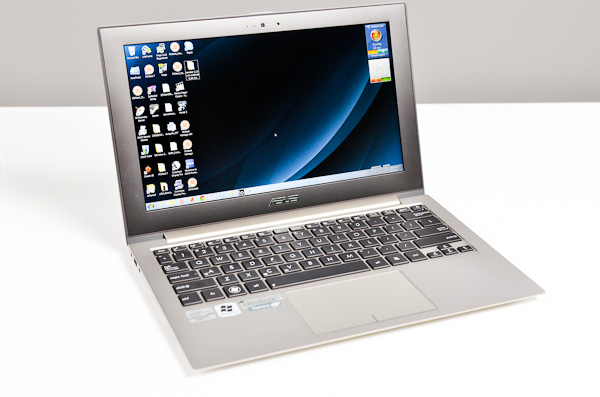






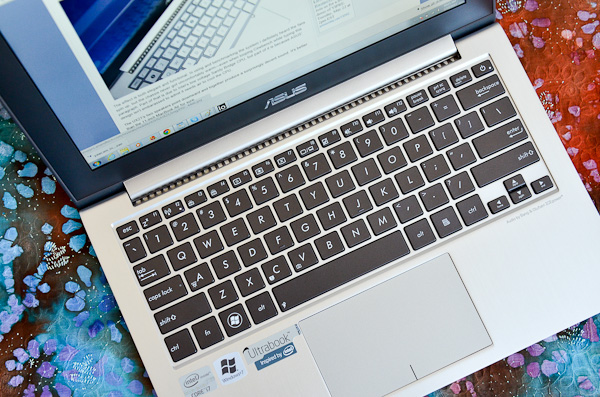
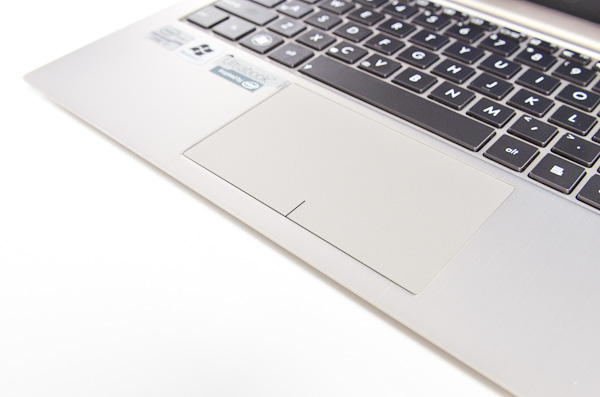
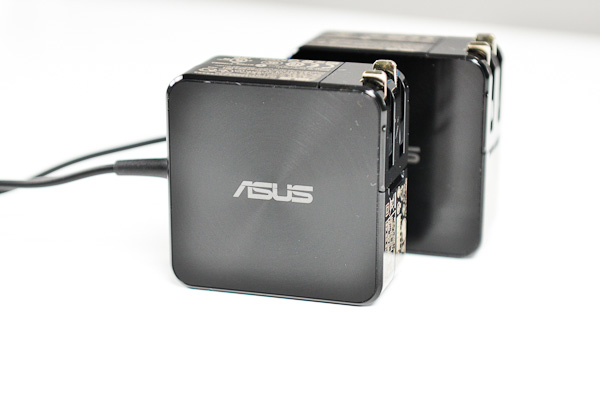
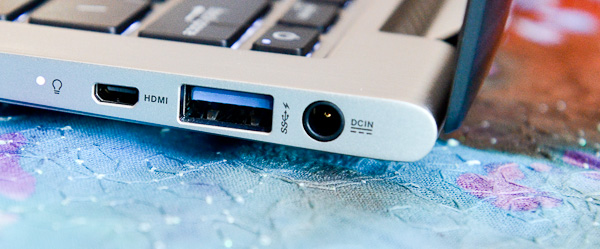








192 Comments
View All Comments
eanazag - Tuesday, May 22, 2012 - link
I will mimic some of the same things about the memory being a little low. Put 4GB onboard and leave a slot to get to 8GB. I'd actually prefer to role the dice with the Sandforce SSD. I would realistically go for the larger machine that can house the nVidia card and more mem. I appreciate gigabit ethernet too, but could make do given the point of the device. Now a little 802.11ac could cure my cabled ethernet needs.My gripe about the 32x is: where'd the screen go? Give me a video card and take away the display? I hope it is an option.
Comparisons:
When looking at the benchmarks, the numbers for Alienware M11 R3 are really good. It is a travesty they are pulling that product at this time. A hardware refresh would hum on it. I was really considering it.
Trinity - I have been thinking about the bulldozer and trinity products and I truly believe that it is AMD's version of hyper-threading. They are seemingly competitive when compared by module count. Their product makes sense in that light. On AMD, I'd really like to see a 150-200W trinity desktop product that can powergate the excess GPU when not needed. Make a product that no one else can make AMD. Give some of us a beast. I'm running a 100W processor and 200W video card now. I'd still get a power savings and heat reduction.
Sunburn74 - Tuesday, May 22, 2012 - link
4gb is fine. The equivalent 11inch macbook air has only 2gb of ram and is considered a marvelous machine. Most people are using only 4gb of ram in their desktops. 4gb is fine. Low profile, ULV machines are not what you want to be using for ram heavy work.Reflex - Wednesday, May 23, 2012 - link
While I can make due on 4GB, it really is non-optimal. I'm not doing anything that requires a powerhouse of a machine, but memory is at a premium. My job involves website work and I frequently have 4-5 browsers open with 30+ tabs on each. Unfortunatly one of those has to be Firefox, which consistently takes a gig plus of memory on its own.I don't think web work is unreasonable for these devices, or ULV in general since there is nothing really CPU or GPU heavy about it. And it can chew up memory fast depending on what you are doing.
I think I can make due with 6GB, but 8GB would truly be better. The Thinkpad I was issued at the office really chugs when I have everything going, and it has 4GB.
Roland00Address - Tuesday, May 22, 2012 - link
The reason you don't see a 125w or higher llano or trinity is due to memory bandwidth. It costs money putting all those excess memory controllers onto the die and using graphic ddr5 doesn't make sense with user replaceable ram. On video cards with gddr5 you have to measure the traces accurately or the signaling gets messed up.There is no point such a large stream processor count onto an apu if you are in the end going to be memory bandwidth limited.
Kevin G - Tuesday, May 22, 2012 - link
The ultrabooks typically don't offer memory expansion so adding GDDR5 support to a product like Trinity does make sense. Various low end GPU's from both AMD and nVidia feature both DDR3 and GDDR5 support. I see no technical reason why the successor to Trinity couldn't support GDDR5 in this market segment as it would give a good boost to GPU performance. Two negatives for GDDR5 would be that high capacity chips are not common (figure 4 GB max on a 128 bit wide bus) and power consumption is higher than vanilla DDR3 chips.For desktops, you are correct that GDDR5 would be a poor choice as users typically expect memory expandability.
eanazag - Wednesday, May 23, 2012 - link
I believe you are missing the big picture. When was the last time you were excited about an AMD processor product release? We know what to expect. AMD talks about a great features that Intel executes 6 months prior and AMD's product is late. They keep fighting the same fight and losing. They will not win the process fight. They gave up on that losing cause. Intel has out innovated them in recent times with turbo cores, configurable TDP, high-k, the 3d transistor, and better cache timings in recent years. What does AMD need to do? They haven't been great at innovation. Good ideas? Yes. But Intel beats them to the punch. AMD needs to differentiate. Beat Intel where they are weak and make it a good pounding. Graphics, but the gap is closing quickly. By Haswell Intel will have parity graphics on die compared to AMD if AMD continues to release bottom percentile graphics performance in processors without pushing the envelope. I believe the goal is to push for $150-$200 discrete graphics card performance on die. They have sold 140W CPUs before.I believe you're making a bigger deal out of memory bandwidth than it really is. When AMD was selling GDDR5 graphics card, nVidia was still making their highend cards with GDDR3. Think around the HD3870 time frame. You can still by DDR3 graphics cards now. They are lots of solutions to bandwidth. 2133 memory is almost mainstream now. I got an email from Newegg this morning selling 16GB for $119.
The point is that AMD has not differentiated where there strength is and this is a key component that makes up their weak financials. Making cutting edge products that perform below the competition because there is no support for it get old.
How do you release a flagship product that performs poorer than the previous architecture? Can no one at AMD afford a single copy of Windows to benchmark with? I could of swore ESPN did a "come on man" piece on bulldozer last fall. I thought I would have been happier if they just did a die shrink on the previous architecture and raise the clocks.
phoenix_rizzen - Wednesday, May 23, 2012 - link
The 13.3" X32, which includes the discrete video card and extra RAM, has the same 1920x1080 IPS display as the X31.It's only the X32 models without the discrete video card that have the 1366x768 display.
mavere - Tuesday, May 22, 2012 - link
I wish you'd also include battery life results for Macbooks in their native OSX.Having the Windows number provides a valuable data point, but ignoring everything else makes that data point only relevant to the minority of MB users who dual-boot enough for battery life to become an issue.
I understand the need to standard the tests. However, the standardization method (IE8, really?) only serves the convenience of the reviewer, not the reader.
damianrobertjones - Tuesday, May 22, 2012 - link
Was Apple the first oem to produce and sell a machine with the chicklet keyboard?damianrobertjones - Tuesday, May 22, 2012 - link
No, they weren'thttp://en.wikipedia.org/wiki/Chiclet_keyboard
http://www.quora.com/Who-implemented-chiclet-keybo...
Please stop calling it Apple's keyboard as it keeps on re-affirming the fanboy crap that's so crazy on the web